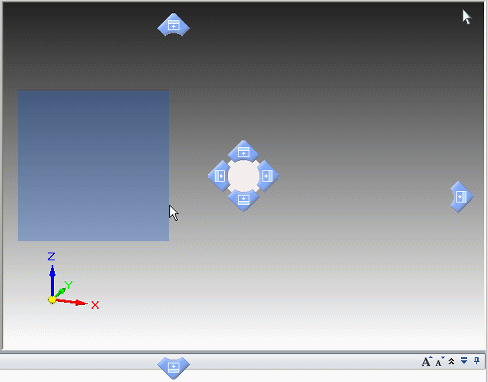Docking windows are windows that can be added to or grouped with other windows, or they can be moved so that they float alone. When a docking window is dropped into a suitable container window, the tools of the dropped window are added to the container window, and the icon representing the newly dropped window is displayed in the tab set.
In 3D environments, PathFinder resides in a tabbed docking window that includes, for example, the Feature Library, Family of Parts, Layers, and the Sensors pane. Each tabbed pane is a self-contained window, which can be dragged to a new location.
In 2D environments, the Library resides in a docking window that also includes these tabbed panes: Groups, Layers, and Queries.
Other docking windows include PromptBar, command bar, and the Help window. These do not contain tab sets themselves, but they can be added to a tab set in another docking window.
Each docking window has its own set of on-demand controls for moving, sizing, and hiding them. This makes it easier to control the space available in the graphic window.
Here are some of the ways you can manipulate a docking window:
Collapse it automatically to a compact state and have it reappear when you need it.
Drag one docking window onto another to combine them into a single unit.
Resize each docking window individually.
In a tabbed docking window, rearrange the order in which tabbed pages are displayed.
Turn it on and off.
Move it out of the graphic window entirely.
You can use docking stickers to provide precision placement of docking windows when moving them or combining them with other docking windows. Docking stickers are displayed only when you are moving a docking window.

To see how different types of docking stickers can be used, see the Help topic, Using docking stickers.
A tab set is a docking window that contains other windows. An example of a tab set is PathFinder (in 3D environments) and the Library (in Draft).
Tabs on the container window permit tabbing between windows in the set. You can rearrange the order in which the tab set is organized, and you can add another docking window to a tab set.
You also can tear off individual tabs and position them as standalone windows.